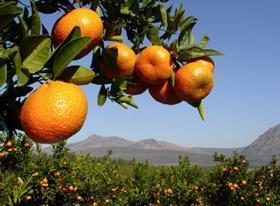
South Africa’s Citrus Growers’ Association (CGA) has forecast export volumes to increase in 2022, despite ongoing challenges.
With the 2022 South African citrus export season kicking off later this month, several citrus growing regions across the country have provided their predicted export volumes for the upcoming campaign.
“These estimates reveal the industry will continue to see steady growth across most citrus varietals, with an estimated 4 per cent growth in exports across these categories,” says the CGA.
Last year, South Africa exported around 161m cartons of citrus.
However, the first forecast only includes the lemon, navel, valencia, and grapefruit categories. Soft citrus, and most importantly the mandarin sector, has yet to be included.
Fruitnet understands the newly established Mandarin Focus Group is still busy finalising estimates. This is due to the numbers of new mandarin orchards coming into production and the need to present accurate figures.
Mandarins, together with lemons, are the key growth sectors in the country’s citrus industry. Last year, South Africa packed 30.8m cartons of mandarins, up from 23.6m cartons the year before. Another substantial increase is expected this year, with CGA indicating the mandarin estimate will be released on 14 April.
Mandarins now dominate the soft citrus category, and a special Mandarin Focus Group has been established to guide this sector under the CGA umbrella.
With a modest increase in soft citrus production this year, the total citrus export crop would reach around 170m cartons.
Previous longer term forecasts tipped South Africa to export some 200m of citrus cartons by 2025.
In announcing its partial forecast, the CGA said the strong production outlook was good news for the South Africa economy considering the local industry sustains 120,000 jobs and brought in R30bn in export revenue last year alone.
However, the industry is facing several challenges, which continue to threaten the profitability and future sustainability of growers. On the farms, South African growers are facing soaring input costs, including fuel and fertiliser price hikes. When it comes to shipping fruit, they are grappling with a hike in freight rates, red tape hampering access to some overseas markets and ongoing operational challenges at South Africa’s ports.
The highlights of the first crop estimate are as follows:
Lemons
Initial estimates put the export crop at 32.3m (15kg) cartons, an increase of 1.3m cartons compared to 2021. Young trees beginning to bear fruit in some regions, including the Western Cape and Senwes in Limpopo, will contribute to this growth. However, a cooler summer could result in smaller fruit in some regions, which could impact the final number of cartons packed and shipped.
Navels
Current predictions point to a 1.5m-carton increase navel volumes, with a total of 28.7m cartons forecast to be exported. Hailstorms in some areas such as the Eastern Cape Midlands resulted in a decrease in predicted estimates, but good rains in other areas such as the Sundays River Valley mean this region should enjoy a 9 per cent growth in navel export volumes.
Valencias
The export prediction is for 58.2m (15kg) cartons of Valencias, a 3.2m-carton increase on the 55m cartons shipped last season. The CGA said the final number shipped could decrease depending on market conditions towards the end of the season, in particular narrowing market windows which could make it difficult to ship volumes late in the season.
Grapefruit
Several external forces could negatively impact grapefruit shipments, including the Russian conflict in Ukraine due to Russia being a major importer of South African grapefruit. An estimated 14.8m (17kg) cartons are predicted for the category during the upcoming season. Furthermore, should fuel and shipping costs continue to escalate, fruit that is sent for processing and Class 2 grapefruit will not be exported, which will also reduce the final export total.
For the industry to continue the upward trajectory it has enjoyed over the past few years, CGA says the government and stakeholders across the value chain need to work together to improve operational capacity and efficiency at the country’s ports and to secure, maintain, and retain as many market access opportunities as possible.
“Key markets that offer major potential for expanded access and require particular attention during the coming season are the US and India,” the association says. “This is the only way growers will be able to offset increasing input costs that are squeezing their profit margins and for the industry to remain competitive, particularly considering local production is expected to grow by another 300,000 tonnes over the next two years.”



